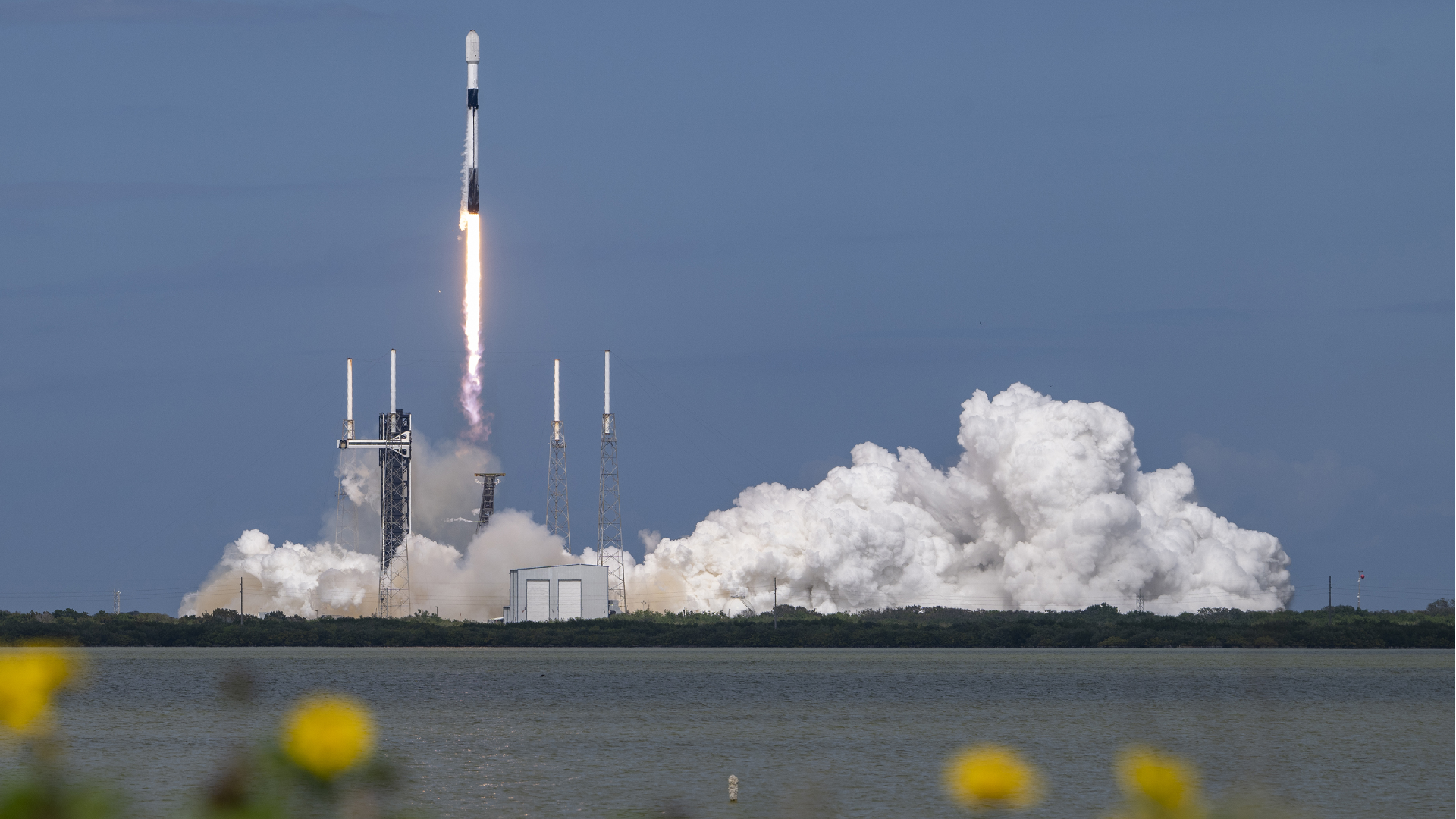
A SpaceX rocket launched a new batch of Starlink satellites into orbit on Tuesday (Feb. 11) as the spaceflight company's space-based internet service begins direct-to-cell service with T-Mobile.
The SpaceX Falcon 9 rocket carried 21 Starlink satellites into space from Space Launch Complex 40 at the Cape Canaveral Space Force Station in Florida. Liftoff occurred on time at 1:53 p.m. EST (1853 GMT).
Tuesday's launch came less than 24 hours after another SpaceX Starlink satellite fleet launch on Monday evening (this time from California's Vandenberg Space Force Base), as the company continues to build a massive internet satellite constellation in low Earth orbit. On Sunday, SpaceX partner T-Mobile announced its Starlink-based phone internet service was now live in a beta test mode, with paid service to begin in July.

“T-Mobile Starlink is the first and only space-based mobile network in the US that automatically connects to your phone so you can be connected even where no cellular network reaches," T-Mobile President and CEO Mike Sievert said in a statement. " It’s a massive technical achievement and an absolute game changer for all wireless users."
T-Mobile and SpaceX first unveiled plans for the space-to-phone internet service in August 2022. Since then, SpaceX has been slowly adding direct-to-phone capable satellites into its Starlink fleet. In fact, 13 such satellites were among the 21 Starlink satellites launched on Tuesday. T-Mobile showcased its Starlink phone service in a Super Bowl ad on Sunday.
Tuesday's launch also included the now-familiar sight of a Falcon 9 rocket booster returning to Earth for a landing.
The Falcon 9 booster, designated B1077, the first stage of the two-stage rocket, made its 18th roundtrip to space on Tuesday. Its previous missions included 10 Starlink missions, two NASA cargo missions (one with a SpaceX Dragon and the other with a Northrop Grumman Cygnus) to the International Space Station (ISS), four satellites for commercial or U.S. military customers and NASA's Crew-5 astronaut mission, also to the ISS.
About eight minutes after liftoff, the Falcon 9 booster returned to Earth to land smoothly on the droneship Just Read The Instructions, which was stationed in the Atlantic Ocean off the shore of Florida awaiting the rocket's return.
Tuesday's launch marked the 19th Falcon 9 launch for SpaceX of 2025, 13 of them carrying Starlink payloads. SpaceX currently has about 6,990 Starlink satellites working in orbit as of this launch, according to astrophysicist and satellite tracker Jonathan McDowell.







